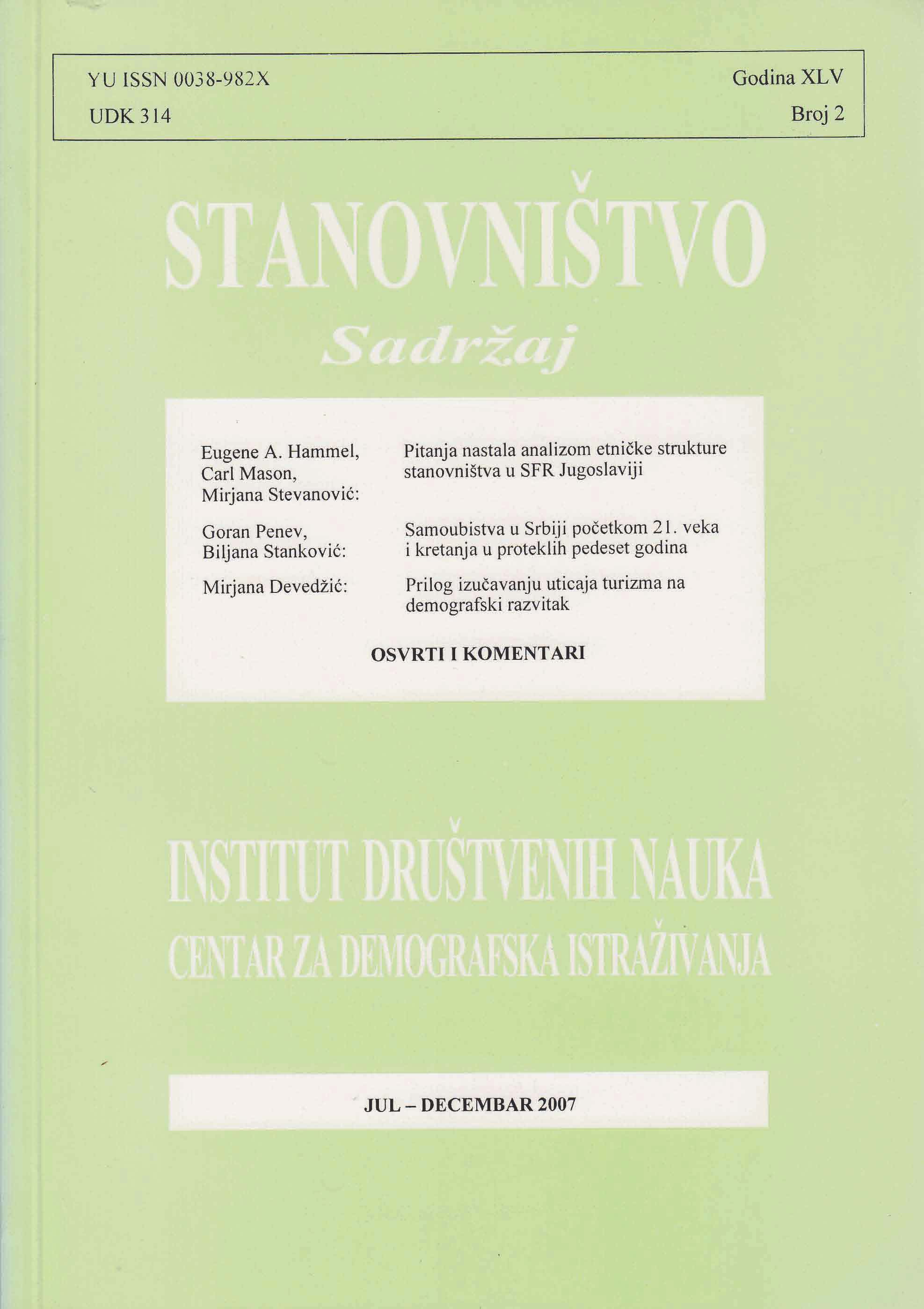Questions from an Analysis of Ethnic Distributions in the Former Yugoslavia
Main Article Content
Abstract
Ethnic diversity in the former Yugoslavia, measured as informational entropy, increased in most regions at the level of the naselje, the opština, and the region, 1961-1991 (no useful data for Slovenia, Macedonia, and Kosovo in 1991). Vojvodina is the most diverse region, Slovenia the least. An exception to the increase is Kosovo-Metohija, where diversity decreased 1961-1981, driven by already serious interethnic conflict. There is some diminution of the increase in diversity in some regions in 1991, possibly because of refugee flows in anticipation of the impending violence. This rather broad and steady increase in diversity leads to questions about the view that pre-existing ethnic hatreds among broad segments of the population led to the ethnic fracturing and collapse of Yugoslavia. Instead it suggests that this fracturing may instead have been the result of competition between political leaders, stimuulated by serious economic difficulties, leading them to emphasize ethnicity in their search for popular support. From this the authors support the view that the collapse of Yugoslavia was from the top downward, not from the bottom upward.
Downloads
Article Details
Published by the Institute of Social Sciences - Center for Demographic Research





